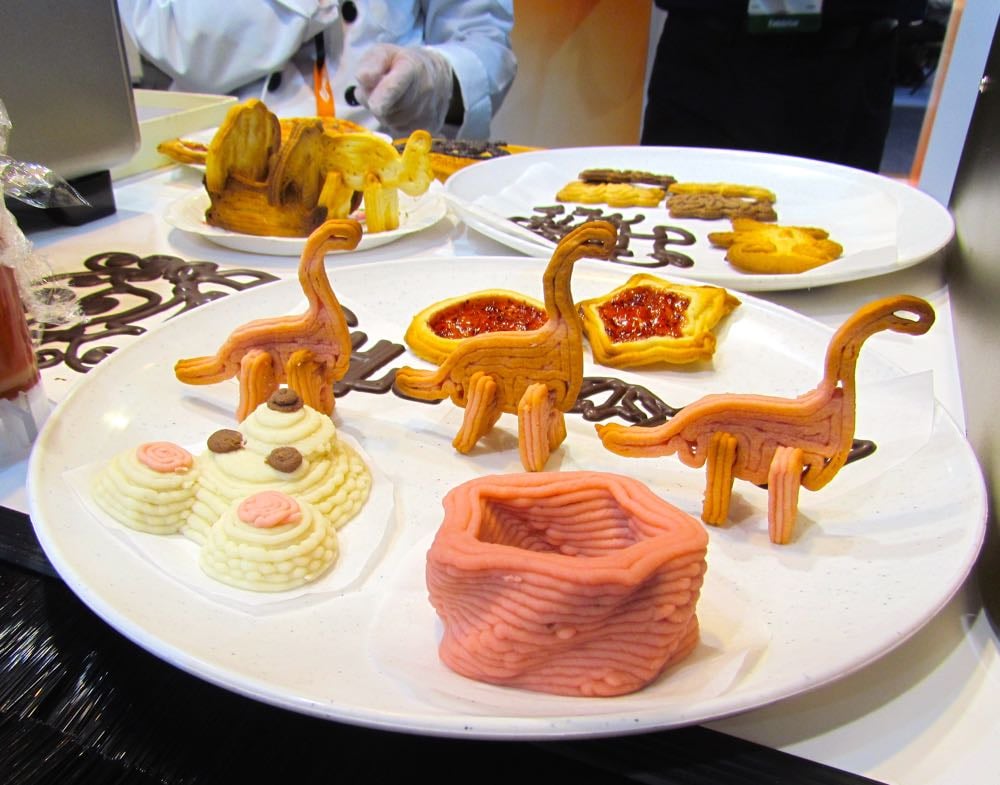
XYZ Printing demonstrated a tasty new product concept: a 3D food printer.
The prototype device is similar to many existing plastic 3D printers, but it includes syringe-like extruders capable of accurately squirting food paste according to a 3D model.
Some prints requiring cooking, such as the dough-based models shown at the top. These prints are placed on conventional cooking racks and heated appropriately in a regular oven. Then they’re eaten, of course. Note that some of the models have been made from multiple parts and then assembled into more complex, otherwise unprintable shapes.
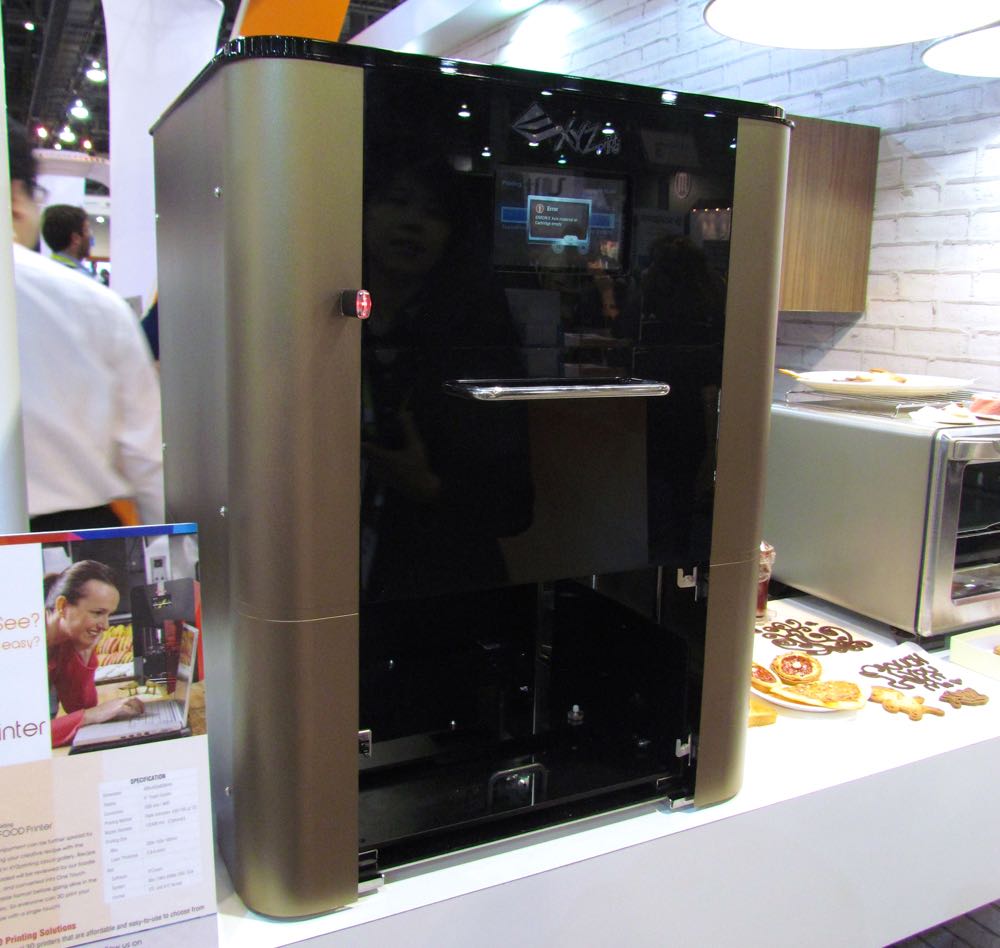
Printing food paste is somewhat different from conventional plastic 3D printing, so the machine has some peculiarities. In the 200 x 150 x 150mm build volume, print nozzles of sizes of 1, 2, 4 or 8mm print layers ranging from 0.8 to 6.4mm in height.
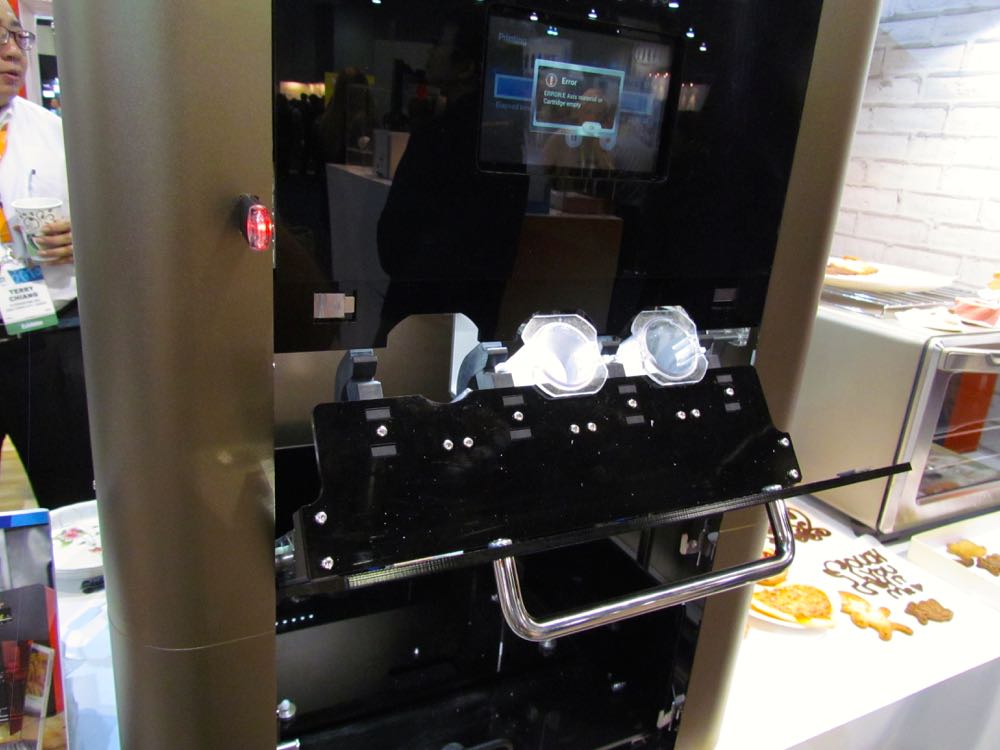
Apparently the printer has a capacity of 50-100 cc of food paste material, and there seems to be three extruders for three different types of material – or perhaps three times the amount of a single material, if you choose.
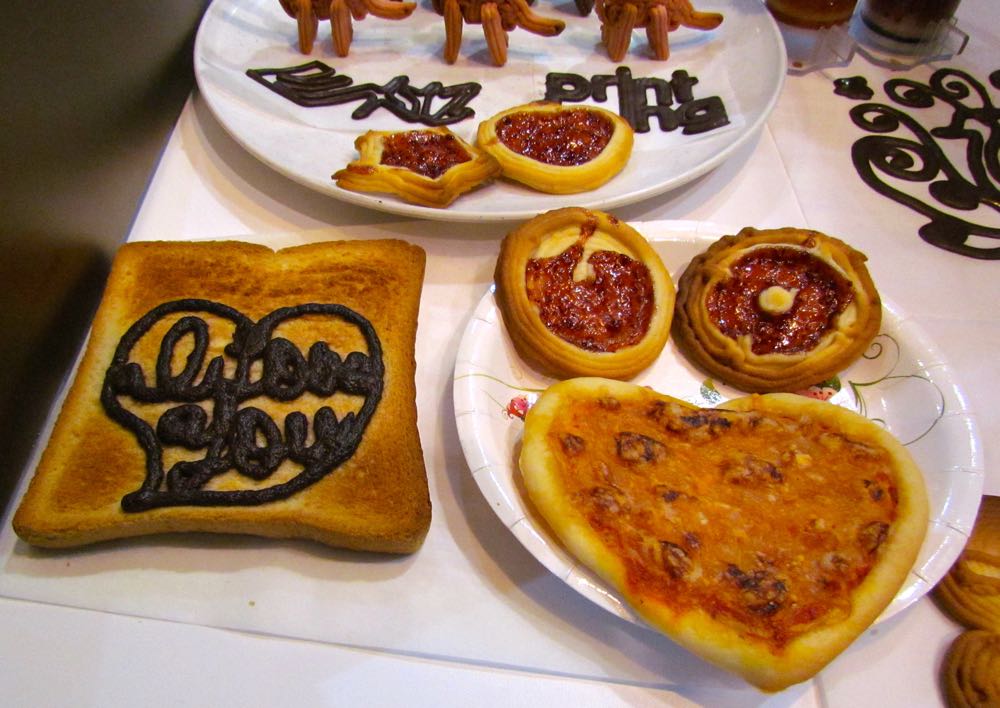
The printer will most likely be primarily used for 2D printing, as you can see here in these amusing chocolate extrusions.
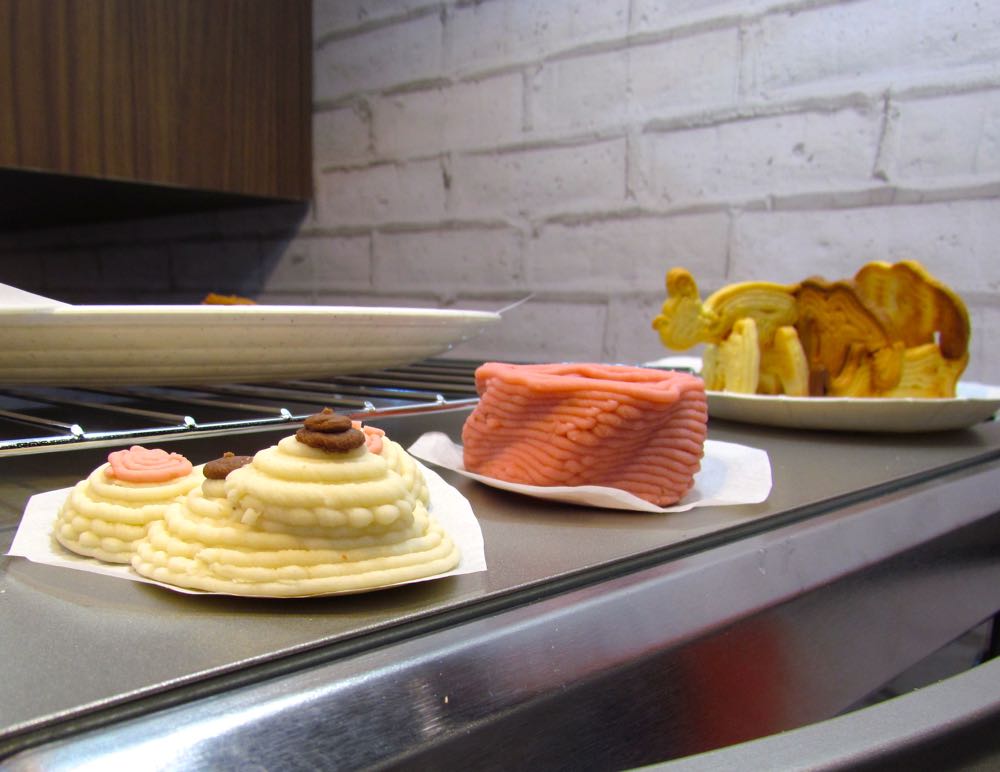
It is also capable of 3D printing, but this is a more complex task.
The machine is sufficiently attractive on the exterior to fit into a modern kitchen, but we’re concerned with other aspects of acceptance. The operator (or 3D cook), would have to either be able to design 3D food models or have access to a suitably large library of food models. We’re not sure that exists presently and we are certain that most cooks are not capable of 3D design.
The other challenge will be wait time. 3D printing takes a long time, perhaps longer than people are willing to wait for food. On the other hand, XYZ Printing has smartly made this machine capable of printing massive 6.4mm layers, which should significantly speed up printing.
Oh, yes, the other barrier to acceptance could be the proposed USD$2,000 price tag. That’s a lot more than a microwave, which would probably be used a lot more than the kitchen 3D printer.
Nevertheless, it’s a good idea for XYZ Printing to test this with the public to gauge acceptance and make adjustments to future models based on their findings.
Via XYZ Printing

